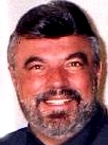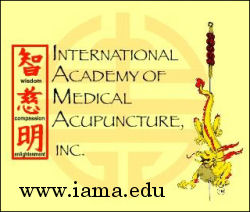Acupuncture & TCM Articles

Acupuncture Articles
by John A. Amaro L.Ac., Dipl.Ac.(NCCAOM), DC
 Dr. Amaro is an internationally known author, lecturer and practitioner beginning his practice of Acupuncture and Chiropractic in 1971. He has led 13 diplomatic Acupuncture study tours of The People's Republic of China escorting more than 500 doctors and practitioners. He has personally studied Acupuncture in nine separate Asian nations. Dr. Amaro is an internationally known author, lecturer and practitioner beginning his practice of Acupuncture and Chiropractic in 1971. He has led 13 diplomatic Acupuncture study tours of The People's Republic of China escorting more than 500 doctors and practitioners. He has personally studied Acupuncture in nine separate Asian nations.
He has received Certification in Acupuncture through the Columbia Institute of Chiropractic in 1973. This was one of the first Acupuncture postgraduate education programs for physicians in North America commencing in 1972.
He has been certified by the Waseda Acupuncture College in Tokyo, Japan in 1974 and graduated from the Chinese Medical Institute, Kowloon, China in 1976. He had previously taken postgraduate studies at the Tai Chung Medical School Taipei, China 1973.
The Modalities of Acupuncture
John A. Amaro L.Ac., Dipl.Ac.(NCCAOM), DC
Perhaps two of the most frequently asked questions about the practice of acupuncture is simply put, "Do the needles hurt?" and "Are there any other ways to perform the procedure?"
To the first question, "yes" and "no." The needles generally create a mosquito bite sensation when inserted and will produce a noticeable discomfort when "teh chi" is achieved. This sensation should accompany all needle insertions as achieving "teh chi" is the goal of a properly placed and stimulated needle. Even though the actual insertion of a needle is certainly not painful, the sensation of "teh chi" can be quite uncomfortable.
To the second question, "Are there any other ways to perform the procedure without the use of needles?" A firm and definite "yes" is in order.
As I have pointed out throughout this column, needles are one of many forms of acupuncture, generally referred to as meridian therapy when needles are not employed; nonetheless, stimulation of the acupoint (reflex point) may be successfully carried out by a variety of means.
The critics say "no way" but practitioners who have employed alternative methods know all too well the marvelous results obtained by non-penetrating modalities. Even though I will be the first to agree that by and large needles are perhaps the highest form of acupuncture, the non-piercing methods run a very close second and in some cases, equal response to the needle.
The most common forms of stimulation in order of response are he/ne laser or light-emitting diode red-light stimulation, electronic stimulation, and teishein.
One of my favorite forms of non-invasive stimulation is, and has always been, the "pressure needles" (teishein). This device is simply struck on the patient's skin with 20-25 light tapping strokes. It is one of the nine ancient forms of acupuncture and is still employed with much enthusiasm in hospitals, clinics, and institutes around the world. In personal treatment of myself, I usually find myself using the teishein more often than any other modality.
Laser or more recently red light-emitting diode has received considerable attention internationally and is being used in some of the most noticeable institutes in the People's Republic of China as well as the majority of the Eastern bloc nations, Europe, Soviet Union, and America.
Interestingly enough, it is now being discovered there is not something magical about the laser that produces the incredible results but that it operates in the red spectral range. Serious research is under way to establish the relationship between red light and the functioning of the human body.
Electronic stimulation runs from microstimulation to milliamp stimulation, with both camps absolutely positive their form is the best. Frankly, in my 20 years of practice, I have had outstanding results with both forms of electronic stimulation. The dye-in-the-wool microstimulation advocates are quick to point out microstim has no equal, but the truth be known, I have had some pretty amazing results with a car key rubbed over the point.
I am more than half way convinced stimulation is stimulation and even ballpoint pens and car keys can produce amazing results, not to mention the human touch.
In rating modalities of acupuncture, be sure you place the Activator instrument high up on the list. Many practitioners throughout the world have reported incredible results with percussion of the acupoint with Activator.
The first and most important thing in acupuncture is where to treat; how you treat is often of secondary importance.
| 